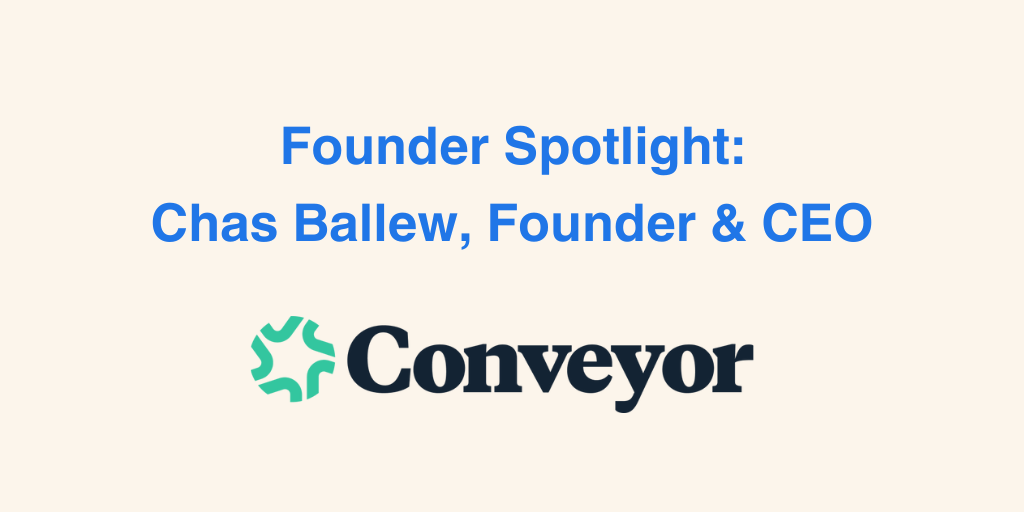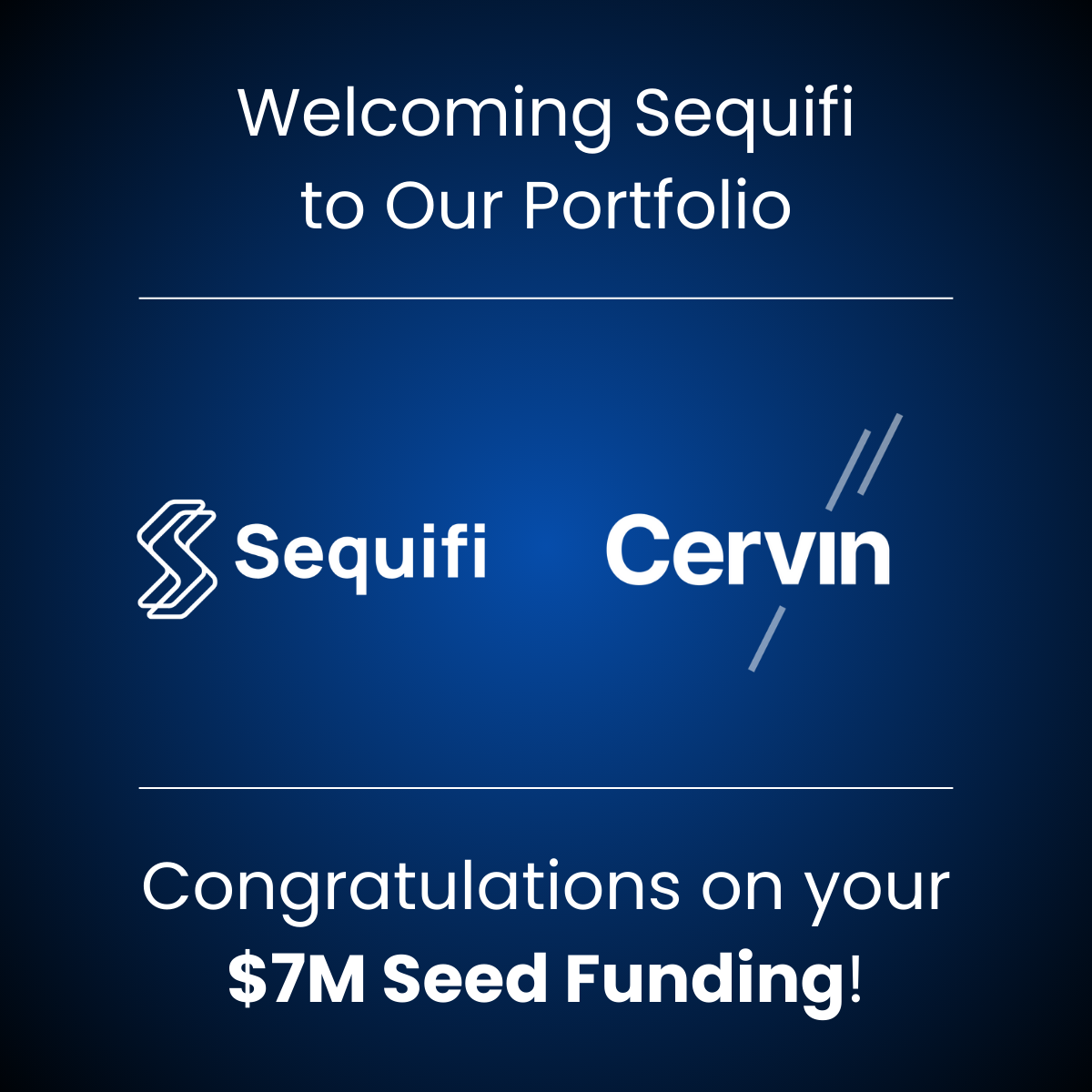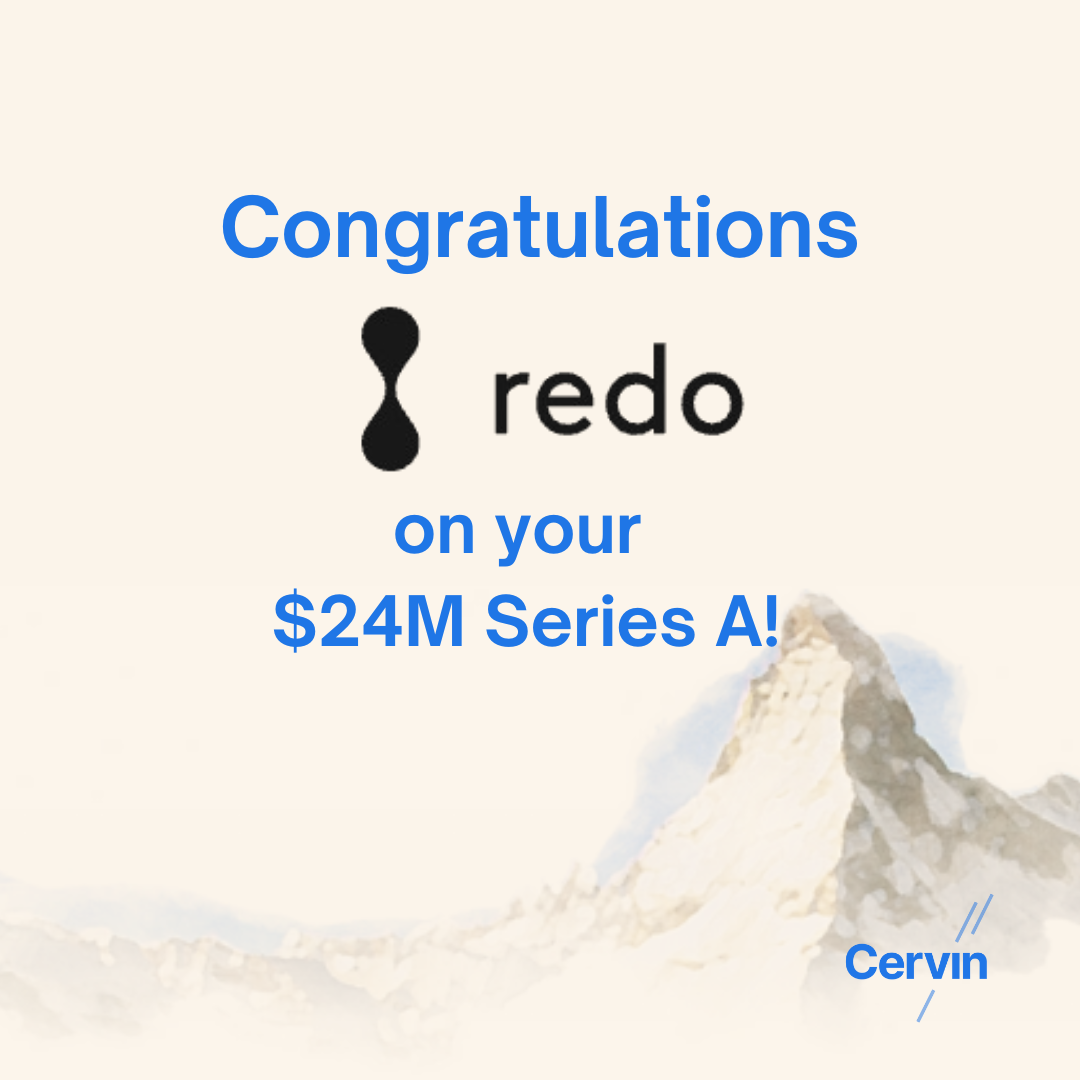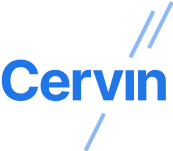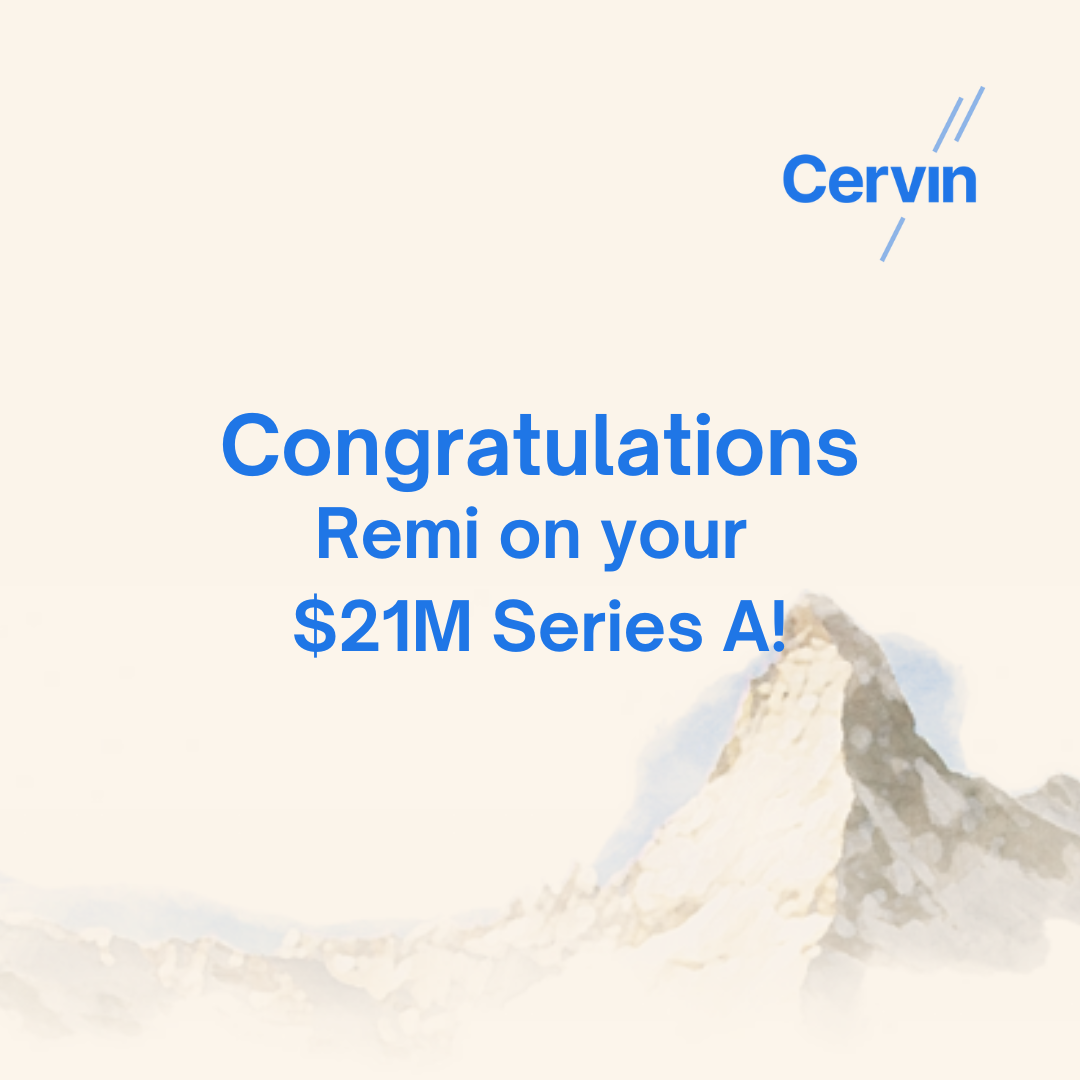Conveyor is the leading generative AI-powered platform that automates and scales the most tedious part of the sales process: customer security reviews. Here is part one of their two-part interview.
Daniel Karp, Partner, Cervin: All right, Chas. Thanks for coming over. It's good to have you with us. Cervin has been partners with Conveyor for a little over six months now, but we’ve known each other for longer than that. We've been super impressed with what you've built and where the company is at. Let’s go back to your roots. The first question I have is what inspired you to start the company?
Chas Ballew, Founder & CEO, Conveyor: Thanks for having me, I'm glad we're working together as well. It's been a great six months since the Series A, and I'm looking forward to the rest. Conveyor was started as a spin out from my first startup Aptible, which is a DevOps hosting company that I started in 2014 with one of my friends from college. At Aptible, we were building DevOps tooling for engineering teams and software teams. We were building databases and app deployment and orchestration type capabilities for deploying software applications in the cloud.
A lot of our customers were subject to HIPAA, and they were regulated in terms of compliance and security. And what we saw over and over again, was, even though they had baked in security and privacy to their architecture, and how they were running their companies, every time one of our customers wanted to go sell to a large client of their own, they had to explain their security posture over and over and over again. It would add sometimes weeks or months to their sales cycle, and it would take a lot of manual work from their sales team and security teams to fill out custom questionnaires and compliance documentation. We looked at that, and we said, this is crazy, this should be a lot faster and a lot simpler. And that's where Conveyor came from. So in 2021, Conveyor started as a free product add-on to the Aptible platform. But in 2021, it really started taking off and getting adoption, so it became clear that it was better as a separate company. We spun the company off and Conveyor’s been running on its own since 2021.
DK: It's fascinating that when you started Aptible in 2014, almost 10 years ago, you spent cycles on solving tons of problems for customers, and then you realized that there was another set of problems that may not be natural for Aptible to solve. So you started small with sample customers, to create a new product. And then you also decided it was a different company.
So tell me a little bit about your learnings from running Aptible as a successful company and how you applied those to Conveyor?
CB: I think the real moment for us was understanding when we were going to market, the core customer for Aptible was a software engineering team. And it's a DevOps platform that helps automate DevOps for software engineering teams. And what we found is that those engineering teams are getting pulled into security questionnaires and explaining their compliance posture. But when we started, basically making the first version of what became the Conveyor product inside Aptible, we started immediately getting requests from bigger companies, much bigger companies, and they were not using the Aptible deployment platform, but they wanted to use the product that became Conveyor. After enough traction built up, it became very clear to us that we need a separate go to market motion to explain what is what became Conveyor.
Originally, we started off by serving the same customer, the engineering teams and the technical teams. And as it became clearer and clearer that there was potential behind Conveyor, it also became clear that the engineering teams were not the core customer to be served. And that's what really led us to spin out Conveyor. The customer persona, and the problems to be solved for the customer persona, are, as you asked, what I take away from Aptible.
I think that the ability to build a product that really serves a specific customer's problems and their needs is one of the most powerful thing.
And as we looked at the core customers for Aptible and these engineering teams, and then the traction that we were getting with Conveyor, it became very clear that the core customers were different. And that's what led us to think we need to embrace these differences.
The ultimate goal for Conveyor is to build a visa type of network that can connect businesses so that they can instantly build trust in the future. And that's a big vision. That's not a side project for Aptible. And because of both the focus on the customers and the breadth of the vision for Conveyor, the decision that Conveyor was best as a separate company.
DK: It's interesting because it was a process. And I think, like the way you just said, there was a point in time when you decided, "Okay, this is like a different company," is when you had a better sense of, "Okay, I understand that the user personas are a little bit different, you know, the product is obviously different." We got pulled into this, but this is not exactly how you should go to market; it's a different marketing effort. So when you add those things up, it's actually different. But the thing that flipped it for you was that it's actually a different vision, a completely different vision. And it's a big vision, a broad vision; hence you need a dedicated effort. But only when you saw that everything adds up and this is a vision where you can build something big, you decided, "Okay, we're gonna do this thing."
